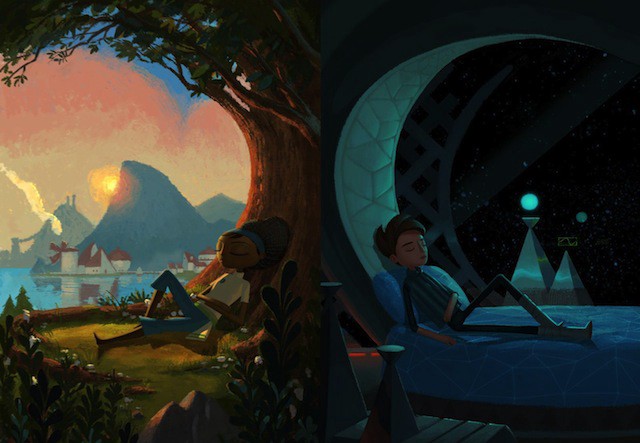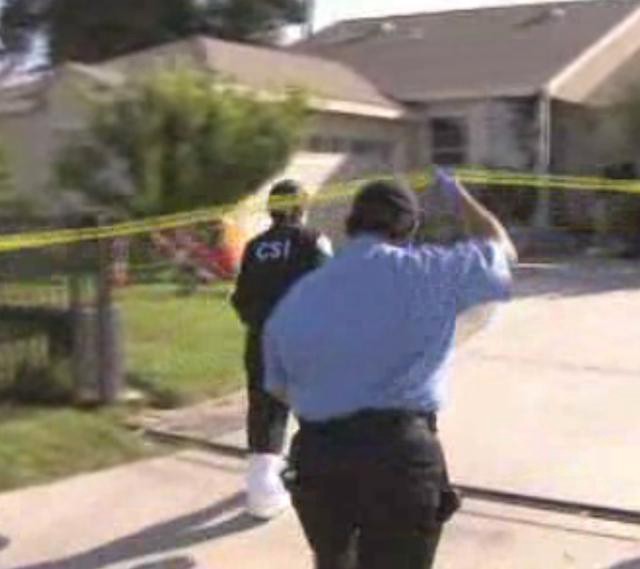New York City, January 29, 2014

★★ Sun and salt had melted the middle of the sidewalk to wet pavement. A dogwalker was headed south behind Trumpville with a small client cradled in his arms, explaining into his hands-free phone that there was too much salt for the dog to walk through. The toddler’s feet left salt on the chest of the parka after he had demanded a shoulder ride home from preschool. The inmost ridge of remaining slush by the curb was uninterrupted dog-piss yellow for yards. Broken ice crawled downriver in one distinct band, like a third lane of traffic along the elevated highway. In the afternoon, the light was bouncy.
Cloud Nothings, "I'm Not Part of Me"
Clevelander Dylan Baldi is, technically speaking, still in his larval form (he’s 21). But his band Cloud Nothings has already put out three absolutely killer albums (their second, self-titled album is bonkers good) that straddle the lines between power pop, punk, garage pop, low-fi, and whatever other basically meaningless subgenres mean “noisy and obscenely hooky pop music.” Cloud Nothings’ new album is called “Here and Nowhere Else” and comes out April 1st.
The Future IS Now
“I think everybody knew how prescient the film was even then. It really kind of predicted, to some extent, in a much more intelligent and sophisticated way, where we were heading culturally, and how much people would do to garner fame. Even Rupert Pupkin, in his own demented way, at least had some sort of craft. He had written material and wanted to be a stand-up, even though he really wasn’t that funny. As opposed to now, where people will, as themselves, get to have shows by just being whoever they are: basically obnoxious drunks, whores, and miscreants.”
— Sandra Bernhard talks King of Comedy
and why are you still even here?
A Videogame You Should Play

Last year, a videogame creator named Tim Schafer, who was best known for a handful of games back in the 90s, got about a bazillion dollars on Kickstarter to make another one of those games. And now the game is here! I’ve been playing it and it is GREAT. Oh man.
So the game is called Broken Age. It is a point-and-click adventure, a very old and now-basically-extinct genre which is more like an interactive comic book than anything else. You click on a spot to make your character go there, you click on another character to talk with them, you click on objects to interact with them. The interactive part is in puzzles and conversation; you need to get certain information from other characters to figure out what’s going on and what to do next, so you’re presented with a list of responses so you can participate in the conversation. You generally have to pick up objects, sometimes combine them, sometimes “use” them on stuff in your environment to solve puzzles, after which you can progress in the story. Timing is hardly ever important; you don’t have to make precise jumps or press a button at a certain time or anything like that.
Broken Age is split up into two stories: one is about an adolescent girl, named Vella, one about an adolescent boy, named Shay. Vella’s story is a fairy tale, colored with pastel brushstrokes and set in what looks like an 18th-century French mountain village, except with monsters and giant birds and neighboring villages set in the clouds. Vella’s life — and death, it turns out — is not to be of her own making.
Shay lives in space, in a spaceship, his every move controlled by an overbearing mom-computer. He’s given pointless tasks to perform, from which he derives neither satisfaction nor escape from boredom. Of course, he stumbles on a hidden part of the ship, and now I will stop explaining the plot, because the joy of playing this kind of game lies in forcing the plot to reveal itself. It’s a book that requires more than just your attention; it requires your skill, your frustration (though not very much; the puzzles are nice and easy). It’s a book in which you are an active participant.
Anyway, Broken Age is great. It’s a kind of game I’d forgotten I liked; it’s slow-paced, the kind of game you can play in bed with a mug of tea on your bedside table. It is startlingly beautiful in a way that doesn’t require, like, a high pixel resolution; Schafer and his team have their own style of drawing characters and environments which seems almost transgressive when compared to big-budget games. Characters have long, spindly limbs, big heads, and big eyes, like your adolescent self in cartoon form, which is fitting for a game about adolescents breaking free of their prescribed lives.
It’s available on Steam, which is like the iTunes of videogames, for Mac, PC, or, um, Linux, for $25, and thankfully it is a slender enough game that it runs on shittier, older computers, if that’s what you’ve got. The first “episode” is available now, and if you buy it you’ll get the second for free in a few months. And you should! It is very good. Good videogame!
Image by Double Fine Productions
Pepsi and 80s Rock Legends Foreigner Take Over Buffalo Wild Wings
by Awl Sponsors
Pepsi recently took over a Secaucus, New Jersey, Buffalo Wild Wings to get football fans hyped for their upcoming #Halftime show on Feb 2nd. They recruited legendary rock band Foreigner to put on an original performance and really get the party going. In this video, Foreigner performs their smash hit “Feels Like the First Time,” only this time it’s “Feels Like a Halftime.”
It’s all part of Pepsi’s “Get Hyped for Halftime” celebration, which is delighting football fans across the country with surprise performances leading up to the big game. Get Hyped for #Halftime at pepsi.com/nfl and youtube.com/pepsi.
The Demon-Haunted House Of Thuy Le
by Natasha Vargas-Cooper

The woman who stabbed her two young daughters called 9–1–1 at six a.m. to tell the dispatcher what she had done. The woman, Thuy Le, who was 38 at the time, had also stabbed herself twelve times and slashed her wrists. Le told the emergency operator that she was at her cousin’s house and everybody was alive but that they needed help. When the police arrived at the a boxy gray and white home in Westminster, in Orange County, they found Le’s five-year-old daughter Rhiana unconscious, without any color in her face and Jobeth, 3, lying awake on a blood-soaked mattress. Three household kitchen knives and a pair of scissors sat slick with blood in the kitchen’s sink.
Le began to wail. Her cousin came onto the bloody scene. “I want Bobby!” Le cried.
A police officer rode with Le in the ambulance to emergency room. He asked why she had tried to kill her children. “I knew something like this was going to happen,” she said, weeping softly. “I tried to tell him.”
Both her daughters survived, though Rhiana arrived at the hospital in critical condition from having her lung puncture and heart nicked. She was put on life support until she stabilized.
Le’s trial for two counts of attempted murder began in Orange County on Monday. Le faces 38 years to life; she is pleading not guilty.
Le’s public defender describes what Le experienced as a nervous breakdown. Her mental health had deteriorated in the months leading up to the stabbings in 2009. The breakdown was hastened by the short sale of her house, the death of her grandmother, and the neglect she felt from her long-time live-in boyfriend and father of her children, Robert “Bobby” Greer, a night-shift taxi cab driver. She began to hallucinate and believed demons or ghosts were tormenting her. No longer wanting to suffer, or for her children to suffer, Le acted in desperation and therefore, her defender says, is not guilty of premeditation or malice.
“This is a case about a woman who took extreme measures to get the attention of her boyfriend,” prosecuting Deputy District Attorney John Christl argued during opening statements on Monday. “She pleaded with him, begged him” to listen to her problems, Christl told the jury. “She even went as far as to say the children will pay.”
Christl, gray-eyed, with a linebacker’s build and assurance, dismissed the notion that Le suffered from any mental disorder. Christl said that just a few days before the stabbing, Le went to a local doctor complaining of nausea triggered by the fights with Greer. “She was not diagnosed with any mental disorder,” Christl told the jury. The doctor Le visited recommended she see a psychologist and even wrote her a prescription for the antidepressant Lexapro. Le did not take the pills because she didn’t want to “get drowsy” while watching the children.
Le, raven haired, squat, wore a peppermint-striped red and white blouse, baggy black pants, and black Keds that barely touched the courtroom’s gray carpet. She sat with eyes fix downward through the first two days of testimony. She only moved to sip from a small paper cup.
Greer took the stand for the defense to corroborate his wife’s “unstable” and “excessively moody” behavior in the weeks leading up to the stabbing. Greer dressed in a sherbet-colored floral shirt, khakis and sneakers. His prim pencil mustache, dark hair, big sad eyes, big forehead, and tiny lamprey mouth gave him a pitiful Fredo Corleone aura. He spoke softly in a nervous rhythm and with queerly vague responses. Such as:
Public Defender: What was [Le] doing for work in 2009?
Greer: It…was.. a…uh…spa. Massage… I don’t recall, um, much, uh, l I know is that it was money in bank, two months before the incident.
And:
“She wanted to go the, um, doctor. I would ask questions. I just remember discussing with the doctor that she had suicidal thoughts while she was getting dressed and the doctor would ask me, you know, how she was doing, and you know, she gave her pills but it was a short time.”
Geer and Le lived together in Stockton in 2005, where Greer worked as a real estate appraiser. They lived in a house they could no longer afford and were forced to sell it. Le relocated to Orange County to live closer to her family and Greer followed eight months after. They rented a small house in Garden Grove. Greer worked as a taxi driver and Le worked in a massage parlor. A few weeks before the stabbing in the fall of 2009, Le told Greer that she was being stalked, followed by a gang, that everyone who came into the massage parlor was an undercover cop, and that someone had put a demon curse on their house in Garden Grove. Le begged Greer to look into the history of the house. Maybe it was haunted, Le told Greer. She felt a presence in the house that she did not have the power to confront. Le pleaded for them to move to a different house; Greer dismissed the thought. When Greer worked nights, Le would become so frightened in the house that she would take the girls to her cousin’s house to spend the night on a mattress in the living room. On a few nights, Le was able to convince Greer to let the family check into a motel to escape the house.
Le told her cousin that when they first moved into the house in Garden Grove, the inside walls were coated in black paint. And sometimes when Le would walk through the house alone, words would materialize out of the wall, bumpy and hard to the touch.
“I do, uh, recall her being afraid of the house,” Greer testified.
Christl wasted no time plowing into Greer on cross-examination: “When you lived in Stockton, weren’t you addicted to crystal meth?”
“Um,” Greer stammered, his fleshy forehead going pink with blush. “Yes.”
“Weren’t the police called to your house seven different times in Stockton and at least twice in Orange County?”
“Yes.”
One time Le called the police on Greer because he accidentally locked her out while he was high on crystal meth. “All she had to do was ring the doorbell, so to speak,” Greer mumbled. “She didn’t need to call the police.”
Christl asked Greer if Le was paranoid about police coming into the parlor because she was actually committing “illegal activities?”
“Maybe,” Greer said, “But she usually did straight massage.”
Christl switched into rapid fire.
“Isn’t it true that during your relationship she threw a knife at you?”
Yes.
“Hit you across the face?”
Yes.
“Kicked you in the stomach?”
Yes.
“And called your mother a prostitute and whore?”
Greer said that Le phrased it differently to his mother because it was in Vietnamese.
While there was no documented child abuse before the stabbing, Christl confirmed that Greer at one point told police officers who were responding to one of the couple’s domestic violence calls that Le “was kind of, like, abusive, to the kids.”
Now that the meth issue was on the table, Le’s public defender attempted to redirect the matter, asking Greer if the reason why Le left Greer in Stockton was because she wanted to protect her children from Greer’s meth addiction.
“Yes.”
The public defender asked if Greer had spoken to Le since the stabbing.
No.
Is the relationship ruined, the public defender asked.
Yes.
Greer was dismissed. Since the stabbing in 2009, Greer has maintained has full custody of the couple’s two children. He made no eye contact with Le as he hurried out of the courtroom.
After three days of trial, jurors began deliberations yesterday afternoon.
Natasha Vargas-Cooper is a reporter in Los Angeles.
Gimmick Patented
Raise your hand if you knew that the Internet would eventually evolve into a venue best suited for posting pictures of government documents confirming the commercial registration of hybrid croissant/doughnut pastries.
Top Chef Seasons, In Order Of Quality

I am still watching Top Chef! I watch it despite the egregious product placement (“Boy, these Toyota Rav4s have so much trunk space!” “I’ve got an idea! Let’s fill it up with the Glad® family of products.”), despite the reliance on reality show tropes, despite the fact that probably every other season is actually terrible television. I love it, even the terrible seasons. I think about the show after it airs. I like putting on old episodes in the background while I cook. I have Thoughts on which contestants went home too early, which challenges were the best and which were the most offensive, culinarily speaking (that’d be season 3’s Cold Stone Creamery challenge, which called on the chefs to make a topping for pre-made vanilla ice cream. The better chefs in that season decided to mock it and made things like sriracha and potato chip toppings, or cauliflower and tempura flake toppings). And so I also have Thoughts on which were the best seasons, and given that we are now one week away from finishing season 11, I feel like I can stick it into the list. Here they are, the best seasons of the best food-based reality competition show on American basic cable.
1. Las Vegas (season 6)
2. All Stars (season 8)
3. Chicago (season 4) (are all the best seasons even numbers? Let’s see how this plays out)
4. Los Angeles (season 2) (omg it’s working) (wait I’m the one making this list)
5. Miami (season 3) (dammit)
6. New Orleans (season 11)
7. San Francisco (season 1)
8. Texas (season 9)
9. Seattle (season 10)
10. New York (season 5)
11. Washington, DC (season 7)
Meteorologists Are Blowing Wind Up Your Ass
“The truth about ‘wind chill’: Does it even really exist?”
